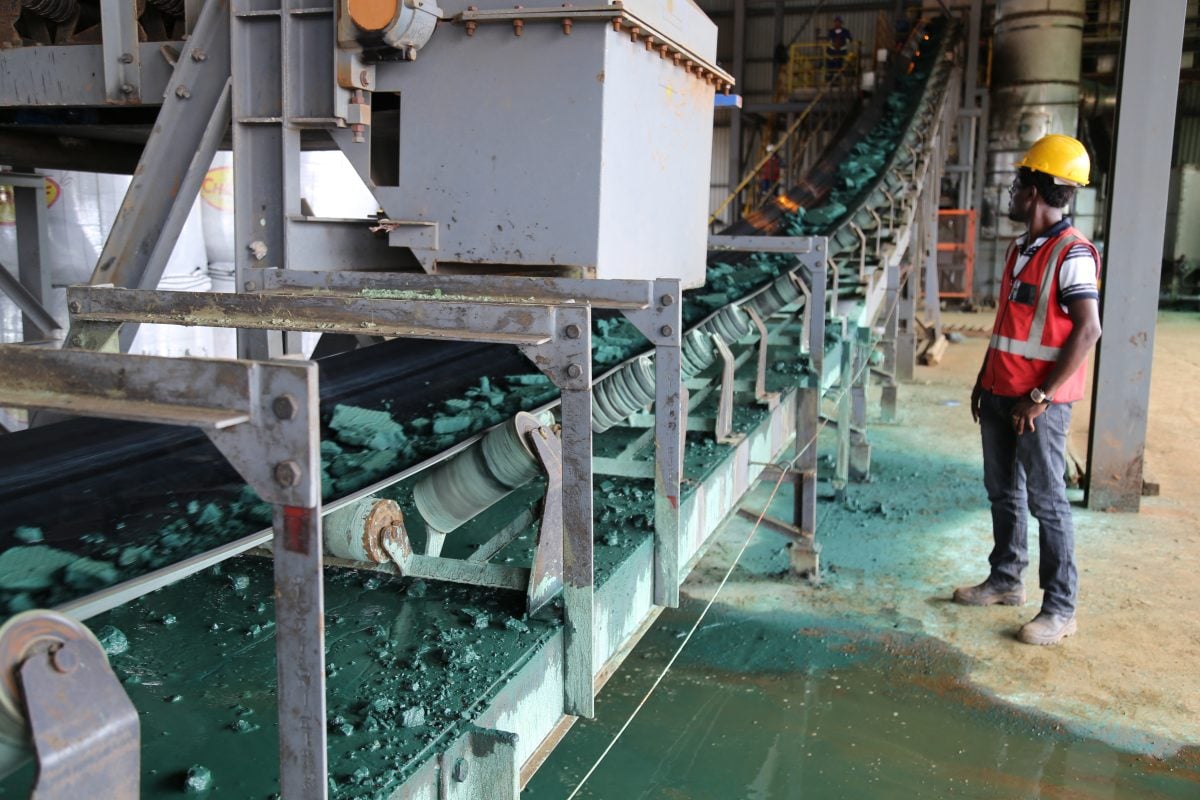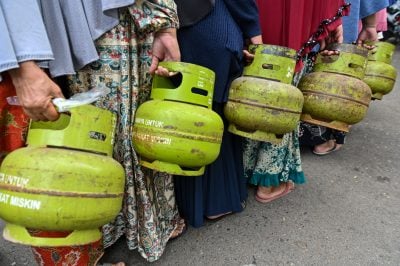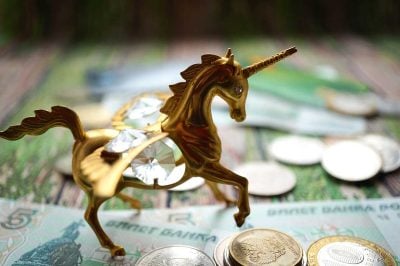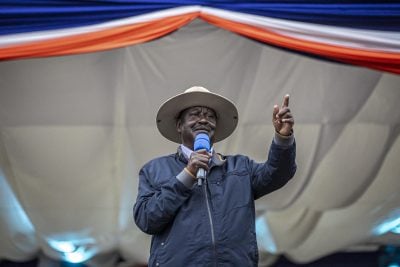The global energy transition depends on a revolution in mining. Technologies such as solar panels, wind turbines and electric vehicle batteries require a diverse set of minerals, many of which are only just starting to be mined in large volumes. These ‘critical minerals’ will also play a key role in defence technologies of various kinds, meaning that control of their supply chains is of crucial strategic importance to global powers.
Africa possesses around half of the world’s cobalt and manganese reserves, along with a fifth of its natural graphite, and significant deposits of other minerals including lithium, nickel and copper. Some estimates suggest Africa contains around 30% of all critical minerals, though the true extent of the continent’s riches could be even greater since vast areas remain under-explored.
“The global energy transition is already creating massive demand for lithium, cobalt, and other minerals,” says Veronica Bolton Smith, CEO of the Critical Minerals Africa Group, which represents companies in the sector. She notes that the International Monetary Fund has forecast that critical minerals could add at least 12% to Africa’s GDP by 2050.
However, extracting these minerals and bringing them to market is far from straightforward. Even the earliest surveying and exploration stages of a project can be very costly. The total cost of bringing a single mine into production can run into billions of dollars. Finding the cash to finance these projects poses a major headache.
“The geology is there in Africa, but we just don’t have the capital base unlocking these projects,” says investment banker Tshepo Magagane, a partner at the Critical Minerals Fund, an investment entity established to take African mining projects into production
He has calculated that around $17bn of specialist mining capital is held by private equity funds globally; of this, however, just 2.8% focuses on Africa.
There is, in other words, a clear mismatch between the resources within Africa and the capital dedicated to developing them.
A broken model
It is easy to get the impression that mining investors would rather look anywhere but Africa – hence the recent interest in rare earth elements in Greenland, an island that has virtually no infrastructure and is almost entirely covered by an ice sheet.
But the challenges in financing mining projects are not unique to Africa.
“The traditional funding model, particularly for smaller companies, is broken,” says Rajat Kohli, director at specialist advisory firm Oval Advisory and former head of mining and metals at Standard Bank. He notes that junior mining companies, which typically seek to tap into equity markets in Toronto or London, have been struggling for several years to raise capital. This is partly because investors are uneasy at the inherent risk in the mining industry, including volatile commodity prices, and have opportunities to generate returns much more quickly in other sectors.
Kohli adds that companies that have completed the exploration stages of a project and identified a resource that is economic to develop can approach other sources of strategic equity. These include family offices, private equity firms, and traders, who will sometimes ‘prepay’ for resources that are delivered once production begins. But companies operating in Africa may be at a disadvantage in accessing these sources of capital.
“Africa is always perceived to have a higher risk premium,” Kohli warns. This even affects countries that have maintained good relations with mining companies. The continent as a whole “shouldn’t be penalised,” he says, “but it is.”
Too many countries on the no-go list
Of course, some countries within Africa do present real risks for mining investors.
“There is, sadly, a growing number of countries which are on the ‘no go’ list for a number of investors,” says Rebecca Major, a partner at law firm Herbert Smith Freehills. She highlights countries including Burkina Faso, Niger and Mali, all of which are run by mulitary juntas and have come under Russian influence, as particularly problematic for investors.
Canadian firm Barrick Gold had to suspend operations in Mali last month after the country’s junta seized gold worth as much as $250m from one of its mines in an ongoing dispute.
The extent to which incidents such as these affect risk perceptions among investors of African mining more broadly is hard to judge.
“Certainly, recent setbacks have paused investment decisions in some markets, though not across Africa as a whole,” says Indigo Ellis, managing director at risk advisory firm JS Held.
“Overall, mining investment is on a long timeline, and investor appetite tends to be led by the quality and quantity of the ore as much as above-ground risk.”
Projects involving minerals that have not previously been mined and processed on a large-scale are even more challenging for investors to navigate.
“Critical minerals projects can sometimes be less mining projects and actually more industrial processing projects. And with that, you have a whole new set of risks,” says Helen Beatty, another partner at Herbert Smith Freehills. “We’re seeing new technologies being used, so we can have greener and greener processing. But with that comes risk.”
Missing middle
The real and perceived riskiness of mining globally and in Africa also affects the availability of debt financing.
“European commercial banks have been pulling out of Africa in the mining sector and so there is a smaller pool of traditional lenders banking African mining projects,” says Beatty.
“What we’re finding is increasingly these projects have a gap. There’s an amount between what the senior debt capacity is and what equity is willing to put in.”
This means mining companies have to get creative.
“What you end up with is actually quite a complex capital structure,” says Beatty.
This can involve niche forms of quasi-debt and quasi-equity. Royalties – in which a financier provides capital in return for an agreed share of future revenues or profits – are playing a greater role in the industry. Streaming arrangements, in which the financier pays a deposit for a share of the mine’s future production at a discounted price, are another option.
Tesla demand could drive exploration
The realisation that critical minerals will play an indispensable role in the energy transition has sparked considerable excitement about the possibility of well-capitalised players stepping forward to accelerate mining projects.
Elon Musk has speculated that Tesla could buy lithium mining companies to secure offtake of the material, which plays a key role in electric vehicle battery chemistries. So far, the flirtation between carmakers and miners has only produced modest results, although Volkswagen did buy a stake in an Australian lithium miner last year.
There is also some evidence that Western governments are prepared to invest in securing critical minerals supply chains. The French government, for example, has pledged €500m for a critical metals fund managed by infrastructure investment firm InfraVia. The fund was launched in 2023 and aims to raise €2bn in total, but is yet to announce any investments.
Another potential source of large-scale capital is development finance institutions. Perhaps surprisingly, though, European development finance institutions (DFIs) have been nervous about backing African critical minerals projects.
Magagane says that the Critical Minerals Fund, which is seeking to raise $1bn, has received support from the German government and European Commission. But he adds that senior figures within DFIs have “pushed back quite aggressively” against the idea of investing in African mining projects.
Magagane adds that “there is a huge human element” in these investment decisions. He believes different incentive structures are needed to encourage investment managers to commit to projects in the sector.
Beatty notes that some African DFIs are beginning to play a role in the sector. “We are increasingly seeing the likes of Africa Finance Corporation and Afrexim come in to support and fund these projects,” she says. The AFC is a particularly significant player, having invested over $1bn into mining projects over the past decade.
Geopolitical competition
Outside of the continent, the Middle East is another obvious source of funding. Investors in the region, including both state-backed entities and private investors, are looking “very seriously” at African mining, Kohli says. This is part of a broader trend in which investors from countries such as Saudi Arabia and the United Arab Emirates are rapidly expanding into African markets.
Yet it is China that stands out as the country that has truly taken a strategic approach to critical minerals. Chinese companies have come close to cornering the market in some critical mineral supply chains; around 80% of DR Congo’s cobalt output, for example, is in Chinese hands.
Alawi Swabury, CEO of the African Battery Initiative, which is promoting investment in the value chain of battery metals, says European investors have been “taking too long” in their decision-making, leaving the door open for China to dominate.
The US is also stepping up its interest in critical minerals worldwide, with President Donald Trump pledging to make access to Ukraine’s rare earths a guarantee of its military support to the country and pushing his plans to acquire Greenland from Denmark.
While global interest in the minerals remains high, Swabury adds that African governments need to be more “proactive” to court investment in the sector, including in value-added mineral processing industries. African ministers and officials are often absent from international mining investment conferences, he laments, suggesting that governments are not yet making the sector a priority.
Ultimately, the energy transition will stall without a dramatic upsurge in the extraction of critical minerals. Cobalt demand, for example, is set to grow threefold by 2050. Amid a future supply crunch, it may be a matter of time before investors are forced to take the opportunities in Africa’s critical minerals sector more seriously.
Want to continue reading? Subscribe today.
You've read all your free articles for this month! Subscribe now to enjoy full access to our content.
Digital Monthly
£8.00 / month
Receive full unlimited access to our articles, opinions, podcasts and more.
Digital Yearly
£70.00 / year
Our best value offer - save £26 and gain access to all of our digital content for an entire year!

 Sign in with Google
Sign in with Google 



